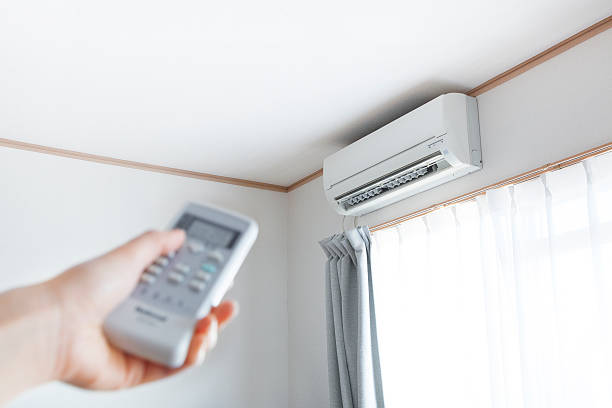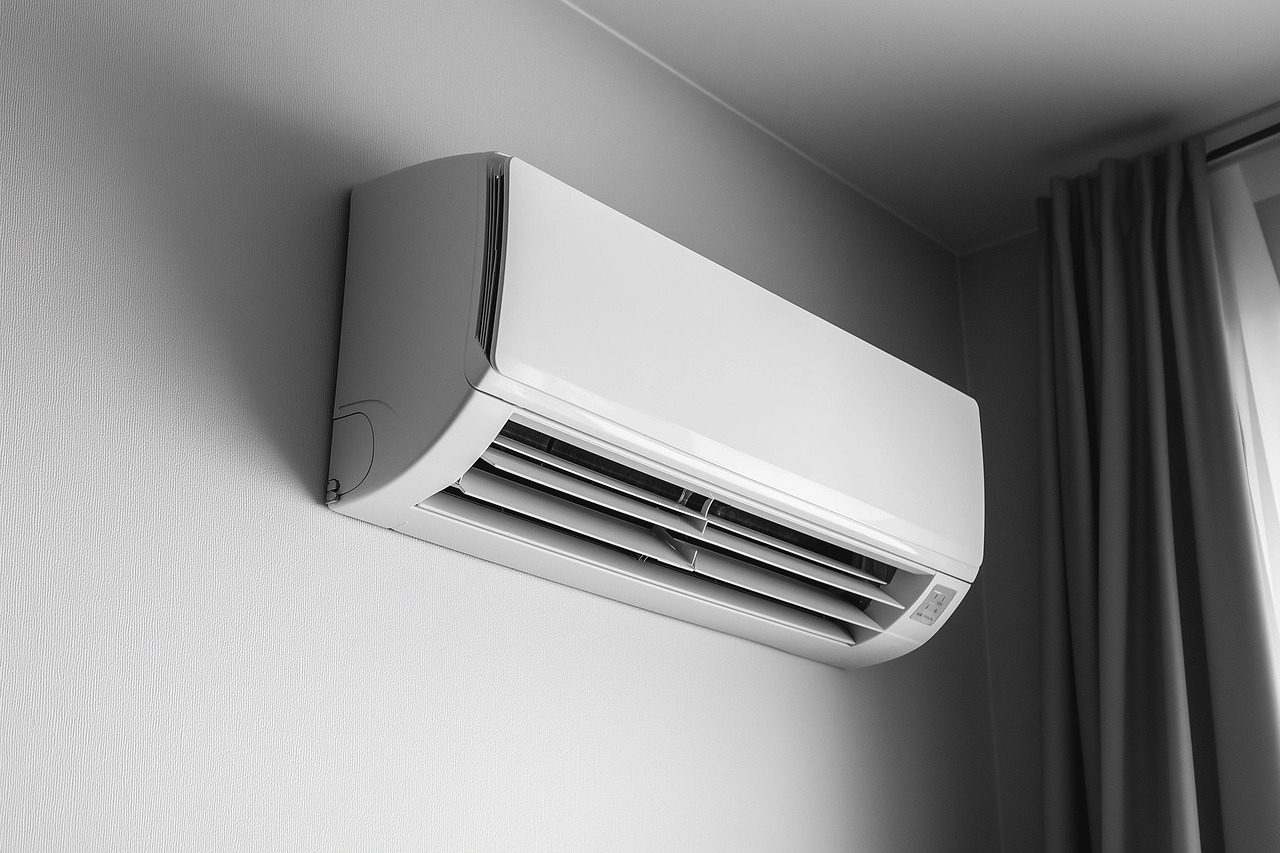
How Does a Mini Split Work? What You Need to Know Before Buying
- Mini splits move heat, not create it, making them highly efficient for both heating and cooling through a simple indoor/outdoor unit setup.
- They offer zoned comfort, allowing you to set different temperatures in different rooms without relying on ductwork.
- Mini splits are energy-efficient, thanks to inverter-driven compressors and the elimination of duct losses, which can waste up to 30% of energy in central HVAC systems.
- Installation is easier than traditional systems, but professional setup is strongly recommended to ensure safety, efficiency, and warranty coverage.
- They require regular maintenance, like cleaning filters and scheduling annual service, but with proper care, a mini split can last 15–20 years.
- The main drawback is upfront cost, but long-term savings, improved comfort, and potential rebates often offset the higher initial investment.
If you’ve been looking into new ways to heat and cool your home, chances are you’ve come across the term mini split. These systems are gaining popularity among homeowners who want energy efficiency, better comfort, and flexible climate control. But before investing, you’re probably asking the big question: how does a mini split work?
This guide will walk you through everything you need to know about mini split systems—what they are, how they operate, the components involved, and whether they’re worth the investment. By the end, you’ll feel confident about whether a mini split is the right choice for your home.
What Is a Mini Split System?
A mini split is a type of ductless heating and cooling system. Unlike traditional central HVAC units, which rely on ductwork to move air throughout your home, a mini split delivers conditioned air directly to individual rooms.
Think of it as a two-part system:
- Indoor unit(s): Mounted on a wall, ceiling, or floor inside the room you want to heat or cool.
- Outdoor unit: Installed outside the home, housing the compressor and condenser.
The indoor and outdoor components are connected by refrigerant lines and electrical wiring, which run through a small hole in the wall. No bulky ducts are required.
How Does a Mini Split Work Step by Step?

To understand how a mini split system operates, it helps to think of it as a continuous loop of heat exchange. The indoor and outdoor units work together to move heat—not create it—making the system far more efficient than traditional heaters or air conditioners. Here’s a breakdown of the process in detail:
1. The Outdoor Unit (Compressor) Starts the Cycle
The process begins outside your home. The compressor, located in the outdoor unit, is the “heart” of the mini split system. Its job is to pressurize refrigerant, a special fluid that can absorb and release heat as it changes between liquid and gas states.
- The compressor squeezes the refrigerant, raising its pressure and temperature.
- This pressurized refrigerant is then sent through copper refrigerant lines to the indoor unit.
- Think of the compressor as the pump that keeps the system running.
2. Refrigerant Absorbs or Releases Heat
This is where the mini split’s magic happens, and it depends on whether you’re cooling or heating your space:
- In cooling mode: The refrigerant inside the indoor unit’s coils absorbs heat from the warm indoor air. The heat is carried outside, where it’s released into the outdoor air by the condenser coils.
- In heating mode: The system reverses direction using a component called a reversing valve. Instead of sending heat outside, the refrigerant absorbs heat from the outdoor air (yes, even in cold temperatures) and delivers it indoors.
This ability to reverse the cycle is why mini splits are often called ductless heat pumps—they work in both directions.
3. The Indoor Air Handler Blows Conditioned Air Into Your Room
Inside your home, the indoor air handler does the final step of making you comfortable:
- A fan pulls in room air and passes it over the refrigerant-filled coils inside the unit.
- If the system is in cooling mode, the coils are cold and absorb heat, lowering the temperature of the air.
- If the system is in heating mode, the coils are warm and release heat, raising the temperature of the air.
- The newly conditioned air is then blown back into the room, while moisture collected during cooling is drained away through a condensate line.
4. The Thermostat Keeps Temperatures Steady
Each air handler is equipped with a built-in thermostat and sensors. These monitor the temperature in real time and communicate with the outdoor unit.
- When the room reaches the set temperature, the system adjusts its output rather than shutting off completely.
- This is possible because mini splits use inverter-driven compressors, which can run at variable speeds. Instead of cycling on and off like traditional systems, they ramp up or down to maintain steady comfort with less energy use.
5. The Cycle Repeats Until Your Room Is Comfortable
The mini split continues this cycle—compressing, transferring, absorbing, and releasing heat—until the thermostat senses that the set temperature has been reached. Because the compressor adjusts automatically, the system avoids big temperature swings and keeps energy consumption lower.
Putting It All Together
To put it simply, a mini split works just like a refrigerator in your kitchen—but instead of keeping food cold, it’s designed to heat or cool your living space. The system doesn’t create hot or cold air; it moves heat energy from one place to another, which is why it’s so efficient.
What Are the Main Components of a Mini Split?
Every mini split system has a few key components that make the process possible:
- Outdoor compressor/condenser unit – The powerhouse of the system that pumps refrigerant.
- Indoor air handler (evaporator) – The wall-mounted or ceiling unit that distributes conditioned air.
- Refrigerant lines – Copper tubes that carry refrigerant between the outdoor and indoor units.
- Conduit – A protective casing that bundles the refrigerant lines, drain line, and power cable.
- Remote control or thermostat – Lets you set your preferred temperature and fan speed.
Some systems also come with advanced features like Wi-Fi control, motion sensors, and air purification filters.
How Does a Mini Split Heat a Room?
Mini splits work as heat pumps, which means they can heat as well as cool.
When in heating mode:
- The refrigerant absorbs heat from the outside air (yes, even in cold weather).
- The compressor pressurizes the refrigerant, increasing its temperature.
- That heat is then released indoors through the air handler’s coils and fan.
This process is much more efficient than burning fuel or using electric resistance heating.
How Does a Mini Split Cool a Room?
Cooling is the reverse process:
- The indoor unit pulls in warm room air.
- The refrigerant absorbs the heat and carries it to the outdoor unit.
- The outdoor condenser releases the heat into the outside air.
- The cooled refrigerant cycles back indoors to continue cooling.
Since the system doesn’t rely on ducts, there’s no energy loss from leaky ductwork, making it more efficient than central AC.
Single-Zone vs. Multi-Zone: What’s the Difference?
When shopping for a mini split, you’ll hear the terms single-zone and multi-zone.
- Single-zone mini split – One indoor unit connected to one outdoor unit. Best for cooling or heating a single room or area.
- Multi-zone mini split – Multiple indoor units connected to a single outdoor unit. Great for whole-home solutions where you want independent temperature control in each room.
Where Can a Mini Split Be Installed?

Mini splits are incredibly versatile and can be installed in:
- Bedrooms
- Living rooms
- Kitchens
- Home offices
- Finished basements
- Garages and workshops
- Add-on spaces like sunrooms
Because they don’t need ducts, they’re also perfect for older homes or buildings where ductwork installation would be costly or impossible.
What Are the Advantages of a Mini Split?
If you’re wondering whether a mini split is worth it, consider these benefits:
- Energy efficiency – No duct loss and inverter technology reduce energy waste.
- Zoned comfort – Different rooms can have different temperatures.
- Easy installation – Only requires a small wall opening for refrigerant lines.
- Quiet operation – Indoor units are much quieter than window ACs.
- Improved air quality – Built-in filters help reduce dust, allergens, and odors.
- Year-round use – Provides both heating and cooling.
Are There Any Disadvantages to Mini Splits?
No system is perfect. Some drawbacks include:
- Higher upfront cost compared to window units or basic HVAC systems.
- Aesthetics – Wall-mounted units may not appeal to everyone.
- Maintenance needs – Filters need regular cleaning, and professional servicing is required.
- Multiple units for large homes – Costs can add up if you want to cover every room.
How Much Does a Mini Split Cost?
The price depends on system size, number of zones, and installation complexity. On average:
- Single-zone mini split: $2,000–$5,000 installed
- Multi-zone mini split: $5,000–$12,000+ installed
Keep in mind that utility savings and possible rebates can offset some of the upfront expense.
How Efficient Are Mini Splits Compared to Central HVAC?
Mini splits are among the most efficient HVAC systems available. Reasons include:
- No duct losses – Central HVAC can lose up to 30% of energy through leaky ducts.
- Variable-speed compressors – Adjust energy use based on demand instead of running at full power constantly.
- Zoned control – No wasted energy heating or cooling unused rooms.
This efficiency translates into lower monthly energy bills.
Can You DIY Install a Mini Split?
This is a common question. While mini split units are sold as DIY kits, installation involves:
- Drilling through walls
- Running refrigerant lines
- Handling electrical connections
- Safely charging refrigerant
For most homeowners, professional installation is strongly recommended to ensure safety, efficiency, and warranty coverage.
How Long Does a Mini Split Last?
With proper care, a mini split can last 15–20 years. Longevity depends on:
- Regular filter cleaning
- Annual professional maintenance
- Keeping the outdoor unit clear of debris
- Avoiding overuse or neglect
What Maintenance Does a Mini Split Require?
Thankfully, mini split maintenance is relatively simple:
- Clean filters every few weeks
- Wipe down indoor unit surfaces
- Check outdoor unit for blockages (leaves, dirt, snow)
- Schedule yearly professional service to check refrigerant levels and system performance
How Does a Mini Split Compare to Window AC Units?
If you’re choosing between a mini split and a window AC, here’s a quick breakdown:
- Mini split pros: More efficient, quieter, doesn’t block windows, provides heating too.
- Mini split cons: Higher upfront cost.
- Window AC pros: Cheaper, easier to install.
- Window AC cons: Less efficient, noisy, only cools (no heat).
How Does a Mini Split Compare to Central Air?
Central HVAC may be better for large homes where ductwork is already installed. But mini splits win in:
- Efficiency
- Zoning flexibility
- Installation in ductless spaces
For homeowners without ducts, mini splits are often the smarter long-term investment.
Who Should Consider a Mini Split?
A mini split might be perfect for you if:
- You live in a home without existing ductwork.
- You want independent temperature control in different rooms.
- You’re renovating or adding onto your home.
- You want to reduce energy bills.
- You value quiet, efficient comfort.
Is a Mini Split Right for You?
Now that you know how does a mini split work, it’s easier to weigh the pros and cons for your own situation.
Mini splits aren’t just a trend—they’re a smart, efficient solution for homeowners who want year-round comfort, better air quality, and flexible zoning. While the upfront investment may be higher than traditional systems, the long-term savings and comfort benefits often make them well worth it.
If you’re considering a purchase, talk to an HVAC professional to size the system properly and ensure it’s installed correctly. The right setup can keep your home comfortable for decades.